
Credits:
Yeeseon Chae, Fall 2021 Curatorial Intern
November 8, 2021
In December 2021, The Kitchen welcomed back Claire Chase to perform a new program of flute works, Density 2036, part viii. Celebrating its eighth year, Density 2036 is Chase’s ongoing project to commission modern flute compositions annually until the centennial of Edgard Varèse’s 1936 flute solo, Density 21.5. Motivated by Varèse’s work, Chase commissioned composers Ann Cleare, Matana Roberts, and Wang Lu to help her break new ground in this year’s program. Ahead of the premiere performance on December 9, I spoke with each artist over email to discuss their artistic visions and guiding principles in their creative processes, along with how this program embarks on a new horizon of musical flute performance.
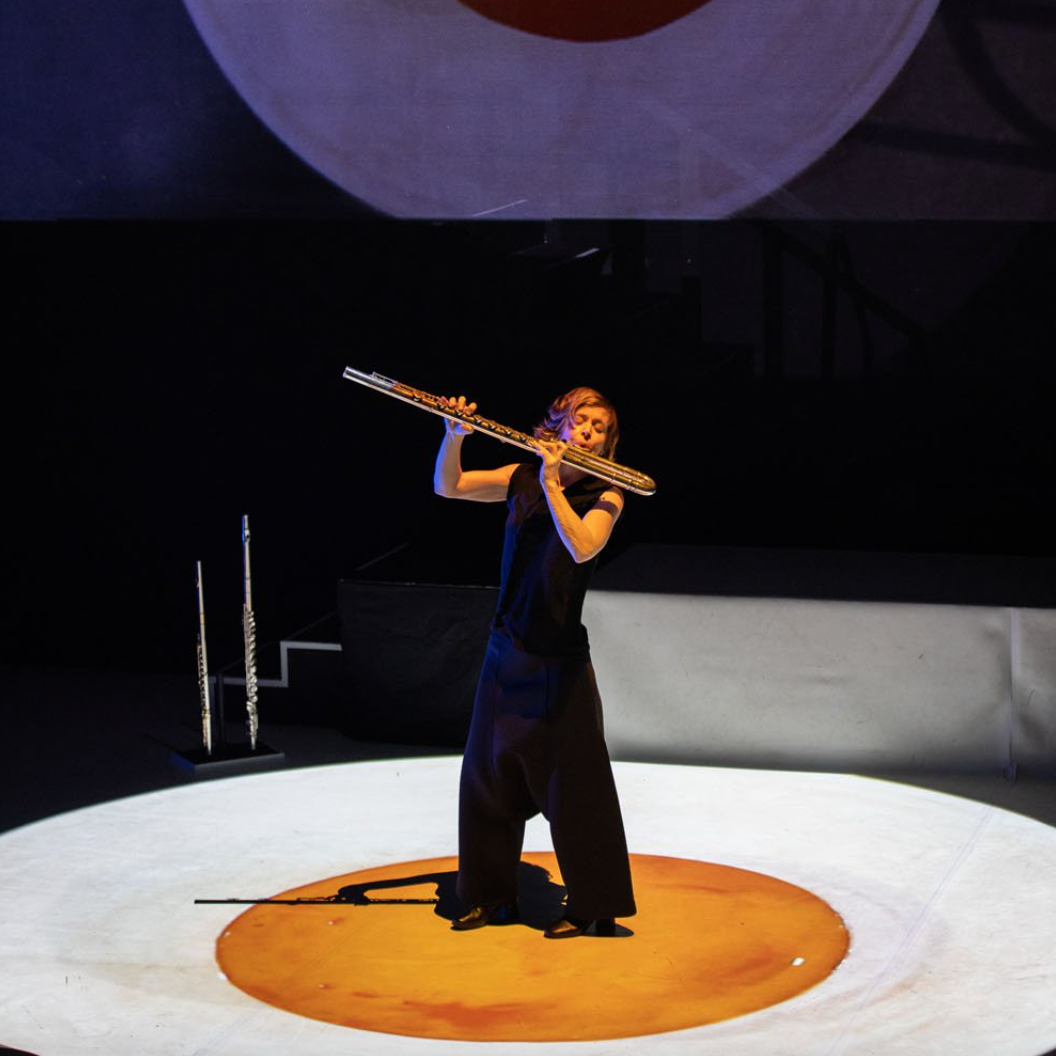
What was the first step in your creative process when Claire Chase came to you with a commission?
Matana Roberts (MR): Brainstorming sonic possibilities inherent in the flute, crossed with the wonderful things I know about Claire’s tenacious creativity and spirit. When I create these specific kinds of pieces for others, I like to think about how best to leave room for their individuality to shine while also exploring sonic experiments that spark my curiosity.
Ann Cleare (AC): In recent years, I have become hugely interested in geology and the sound of the earth, particularly in the centre of Ireland, where I live. The flute is one of my favorite instruments and sounds in the world—it is reminiscent of air, wind, movements of the earth, and so the chance to write for it always sparks so many sonic images in my mind. In the piece I have written for Claire, entitled anfa, the initial image of the flute being a type of navigator of geological strata and material held firm in my mind throughout the process.
Wang Lu (WL): I have known and admired Claire’s capacious range of music making and performing for a long time. When she approached me with this invitation, I was thrilled. I thought to listen more to her recordings starting from earlier releases and get more familiar with her expansive range of styles in playing.
How did this inform the rest of your process?
MR: It gave me a starting point to root back and forth from. I also keep an ongoing notebook of fragments and musical ideas that interest me, and usually when I am working on a new piece, I pull inspiration from it as well depending on that back and forth rooting… what it makes me think about, how it makes me feel, etc.
WL: This rediscovery of her playing made me think about my own practice. I asked myself why not take this opportunity as a challenge to make music with a completely different process and make it a real collaborative project. And it has been quite an empowering and intense ride making this piece! I’m very grateful for her boundless ideas and support.
Given that your practices both draw from historical references while also breaking from musical tradition, how did history (whether that is past experiences with the flute or the larger history of the instrument) influence this piece? What were points of inspiration for this project?
MR: I don’t always dig into historical references for the work and music systems I make, and that’s why I love getting commissions that give me freedom to dig into other things that fascinate me. I am a big bio science geek, and this particular piece is about my fascination with the human nervous system and brain, the ongoing scientific research surrounding how creative brains work in particular, specifically the idea of neurodiversity and what that means to the creative act and how that in turn fosters the role of memory, memory recall, neuro after-imaging… which I suppose touches on history, albeit more personal history for whomever plays this system or piece I have created.

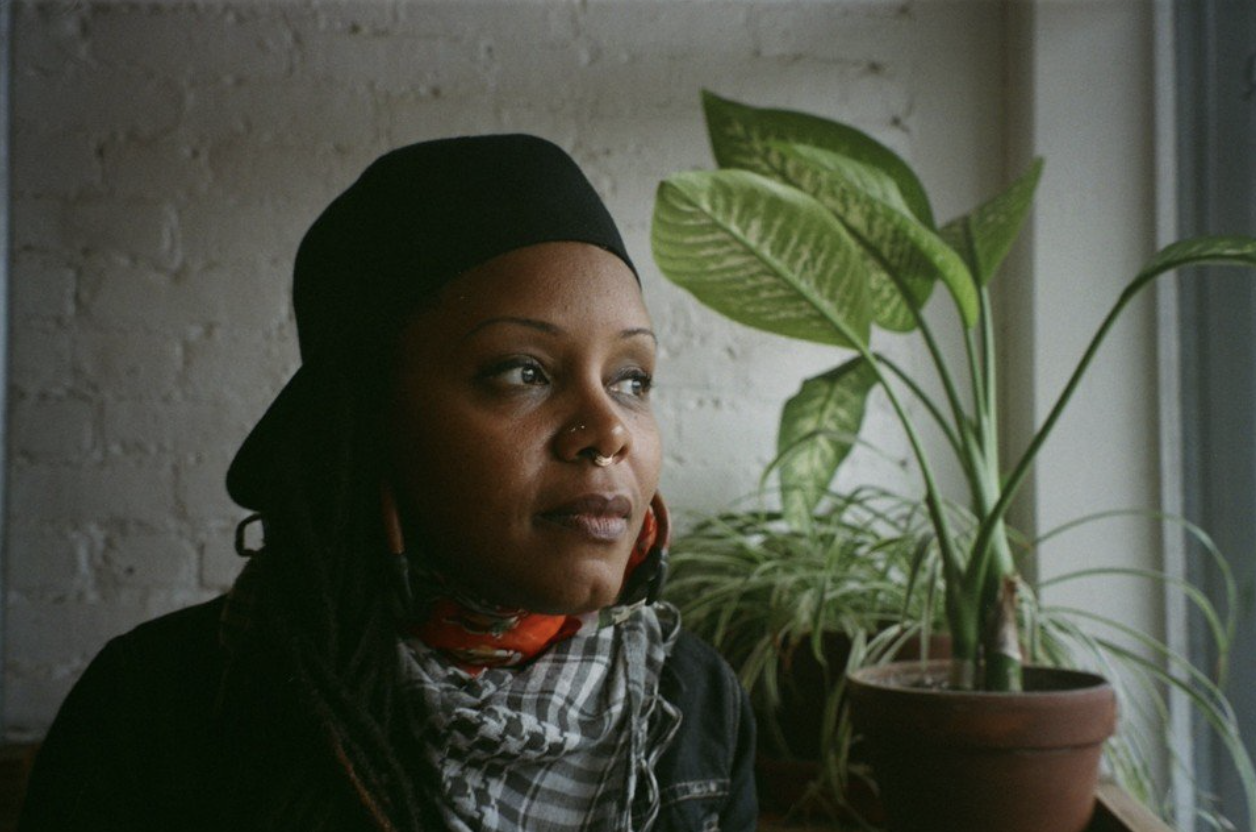
AC: Although I can’t deny the influence of musical history on my work, I would say that this work is far more concerned and inspired by the history of a landscape and the secrets it might hold beyond its surface. Anfa is the Irish word for a disturbance in the elements, and in this piece, it signifies a psychogeographical exploration. As visualized through the works of Ailbhe Ní Bhriain, the particular place in focus here is the desolate, depleted Boglands at the centre of Ireland, a landscape that is haunted by its industrial and geological history. Through the infiltration of the contrabass flute, this “fixed” place becomes liquified, animated, traversable, venturing inward towards lost forms of light and motion, taking the landscape back to a position of material vitality and possibility.
WL: When I was a junior at the Central Conservatory of Music in Beijing, my solo flute piece A Distant World was premiered by flutist Christoph Bosch (from the Phoenix Ensemble based in Basel) at a new music festival in Mongolia. That was the first piece of mine premiered outside of China. I fantasized about the desert, the vastness of it, the camps where the concert would take place–things a 20-year-old urban young person had never experienced. I dreamed of the ancient bone flute, excavated from over thousands of years ago. I also paid my homage to Edgard Varèse by quoting from his Density 21.5. When I told Claire this anecdote, we were both surprised by the conscience and connection there with her Density project and Varèse. To me, learning history and repertoire old and young is the point of departure to new adventures and imagination. In the process of making this new piece Aftertouch, I worked with brilliant musician and composer friends Russell Greenberg and Jacob Sokolov Gonzalez on the electronic part. The collaboration and discussion between us are something I craved, especially after this long isolation in the pandemic. In the piece, the negotiation between natural and artificial /man-made sound worlds is something I’m still contemplating today! Various poly-rhythmic dance beats, jittery motions of controller video game playing inspired action-driven portions of the work. Unbounded and drifting almost sedated moments invite you to a rather familiar space of your own thoughts.
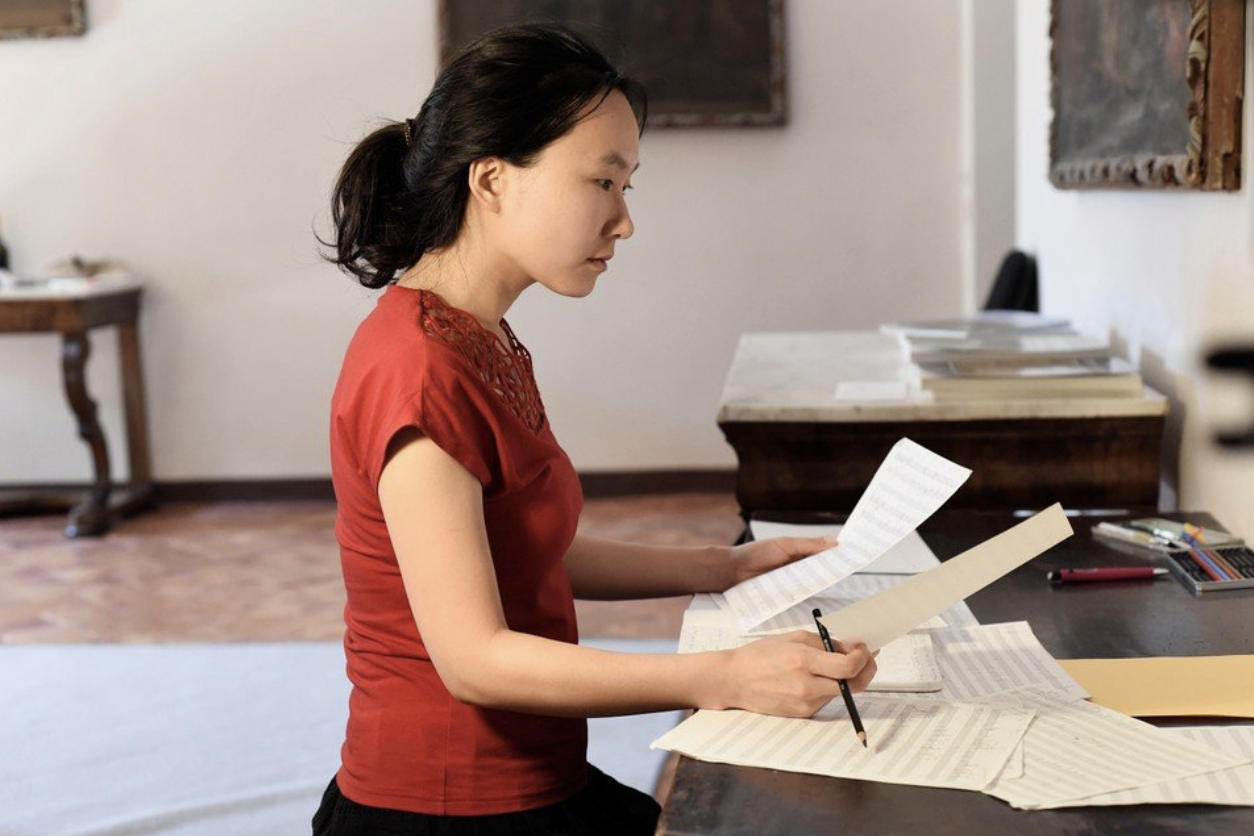
Over the past year, did your relationship to space, including virtual space, change how you think about composing new sounds?
MR: I went deeply inward, I’m still a bit there…. It has been a very introspective, challenging, sad but yet also a forgiving time, and further evidence that fearlessness is all we have from moment to moment…there are no guarantees…the external world does not offer us what our internal worlds can. Our internal worlds are a whole universe of limitless possibility that can make our external senses feel so much more whole and held. Creativity during this time has also referenced these feelings for me, in fits and starts… Though it is definitely a journey of great mystery still…
AC: In some sense, with the purchase of some new microphones and recording equipment, I had the time to explore sound on an even more microscopic level than before. But, on the other hand, collaborating with musicians from a distance is very challenging. Even though much work has been devoted to making optimal online rehearsal spaces, nothing beats the liveness and vitality of being in a room where sound-making is happening!
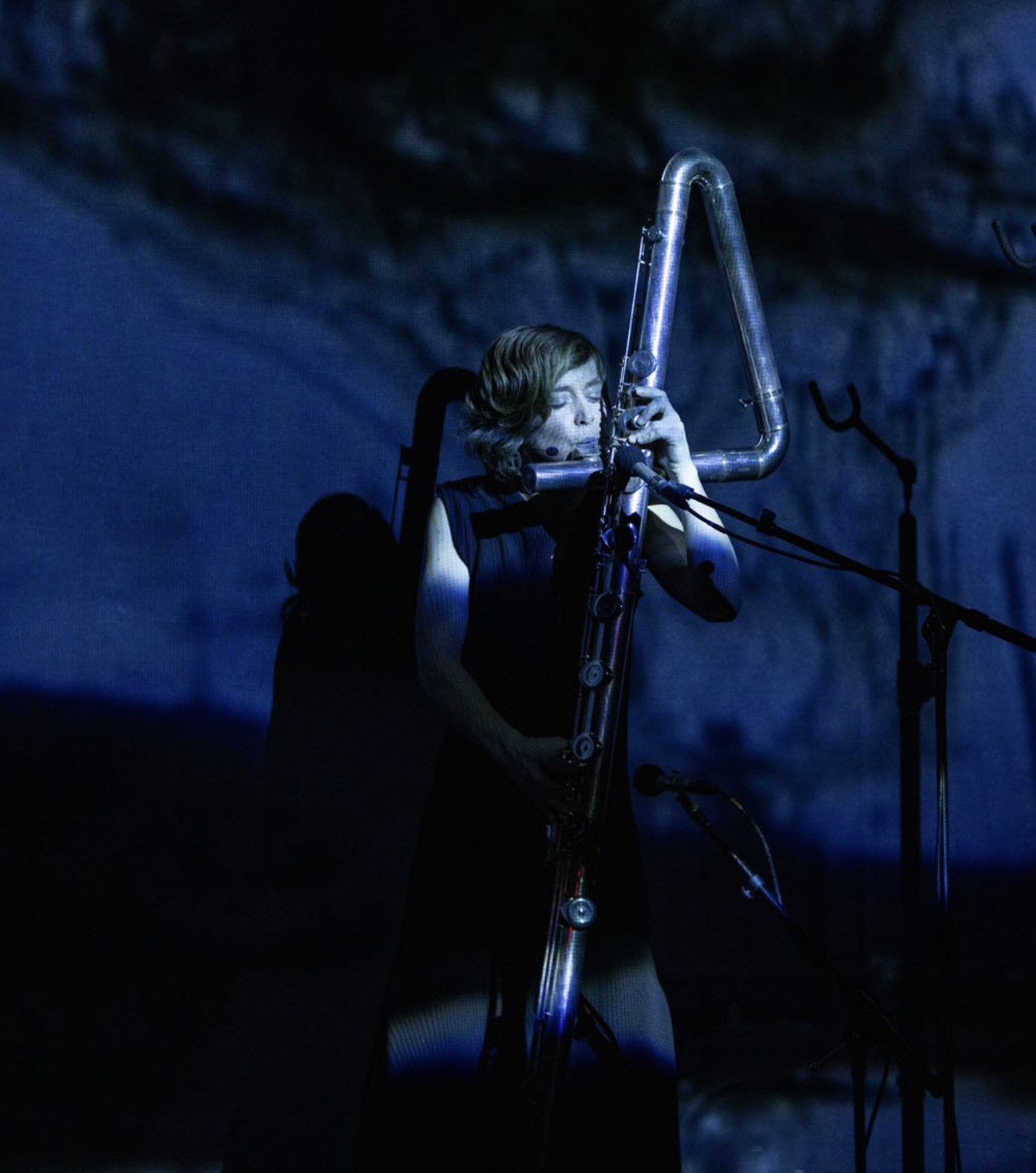
WL: Over the past year during the pandemic, whenever I had chances to walk outside in nature, to wave to my neighbors from a distance, to hear an ambulance passing, I felt especially moved. I’m moved by the emotional capacity of the physical space and its most gentle and most jarring sounds surrounding us. One only realizes how much we hear nature and live within it when we are deprived and constrained from it. One also is forced to experience space in a much lonelier and intimate way. I produced my second portrait album An Atlas of Time remotely from my bedroom last year. My headphones replaced the studio mixing and mastering experience. With the sound engineer, we were trying our best to assimilate being in the same room and listening through the same speakers. For almost two years, my overseas parents’ connection to me has been only living inside the space of a video call. The space of the call to my parents and the virtual space of many, many online concerts filled with passionate audiences in front of their own screen definitely got me thinking about my own music differently in terms of private space, shared space, and immeasurable space...
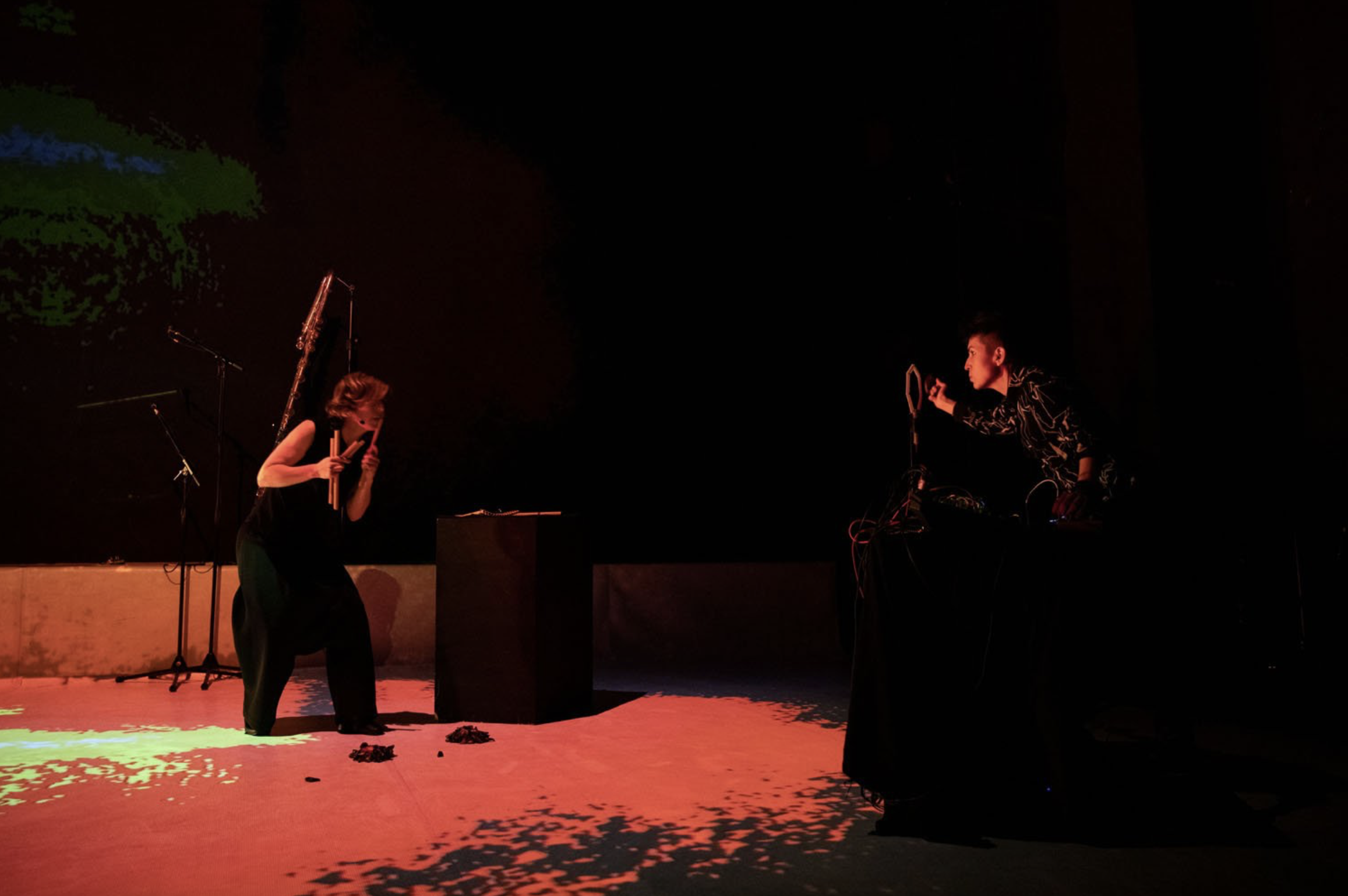
Density 2036 is now in its eighth year. How have the previous parts influenced who you collaborate with and commission works from? Are there specific textures or sounds from the flute that you want to explore with each new iteration?
Claire Chase (CC): It’s wild to hear you say “eighth year” because in so many ways I feel that I’m just getting my feet wet with this mammoth project. And then there are days when I wake up with a start and think “Oh God, only fifteen more years of Density!” This is the beauty of a long project, I suppose: your sense of time flips on its head, expands, contracts, forgets itself altogether. It’s a lot like music in this way.
While the previous cycles of Density compositions certainly influence how I approach the Densities that follow, I am committed to being in a constant state of becoming with this project. I want to allow the material in each cycle to newly shape and form and reshape and reform who I think I am, what I think the flute can do, and what the live concert experience can be. If we’d ever “arrive” at anything, or if we’d ever find ourselves coasting in a comfy zone, I don’t think we would be doing the work. The one rule of the project is that we purposefully pivot from what we’ve explored in the previous cycle, and we hurl ourselves into new terrain, no matter how uncomfortable or insurmountable that terrain feels. My guiding force is that I want to go beyond what I know, and I want to work with collaborators who have that same deep and exuberant wish.
For me, this is also the purest way of honoring Varèse and his invitation to imagine our musical future expansively. He said that “possible musical forms are as limitless as the exterior forms of crystal,” and I love thinking about this in the context of Density. Considered this way, this quarter-of-a-century long project is a tiny speck of dust.
Now, after having received the scores, could you talk about your current process and the final stages of preparing for Density 2036, part viii? How does the collaboration for the various aspects of the performance, such as sound, light, video, and staging, play into or even emphasize how you shape your vision for this iteration?
CC: Each piece has very different demands and each offers unique challenges, but the one consistent thing is that there’s generally a lot of back and forth with the composers in the weeks leading up to the premiere. I think Wang Lu and Levy I might have logged a record number of emails and text messages (!) for our collaboration as we’ve tried to work out her beautiful and extremely specific ideas for the live processing of my sounds in her piece Aftertouch. Ann Cleare and I have been on WhatsApp daily for the past month from Cambridge to Dublin, sending rehearsal snippets and multiphonic fingerings back and forth as we’ve tried to get the sounds just right for her wonderfully nuanced piece anfa, which involves a performer-controlled synth engine that I play with my big toe. And Matana and I had a soulful, long Zoom the other day to discuss her “Endless Score” process, a boldly open-ended form of music-making that I’ve decided to honor during this run by inviting a different small ensemble to play with me each night: the first night, it’ll be flute and electronics (the brilliant intermedia sound artist Senem Pirler); the second night it’ll be me and Senem and the protean trumpet virtuoso Nate Wooley*; and for the finale, it’ll be me and Senem and the astoundingly versatile percussionist and sound artist Susie Ibarra. The piece will be entirely different each night with these different energies on stage interpreting Matana’s score. We can’t “rehearse” any of this because so much of it is about being in the performance moment, so the preparation for Matana’s piece has been mental, spiritual, curatorial, communal. It’s been so beautiful.
Interestingly, all three of the commissioned composers this year independently decided to use video in their pieces! This was never a conversation; it just happened. I feel that there was some kind of telepathy that occurred between them (they’ve never spoken as a group, amazingly—the first time that will happen will be at the pre-show talk on December 9!) and so we just rode it and decided to shape this year’s show around the video elements. We engaged the wonderful projection designer Monica Duncan to create different projection surfaces for each of these works, and I’m so inspired by the decisions she’s made to project variously on the floor, on the performers, and on a scrim, giving us a diversity of immersive textures that are thoughtfully integrated with the sound worlds of each piece. We decided to bring back Levy Lorenzo’s “light-flute” from part vi at the very end of the show for the Varèse. The light-flute is an interactive light object designed by Levy, shaped like a flute and hung up above my head on the back wall of the theater, and it responds dynamically to each of my gestures. Playing with it feels like playing with beams of light as extensions of my limbs—it’s very magical, and although I know I’m activating it with my sound, the feeling is that it’s activating me, sending me heat and…density!
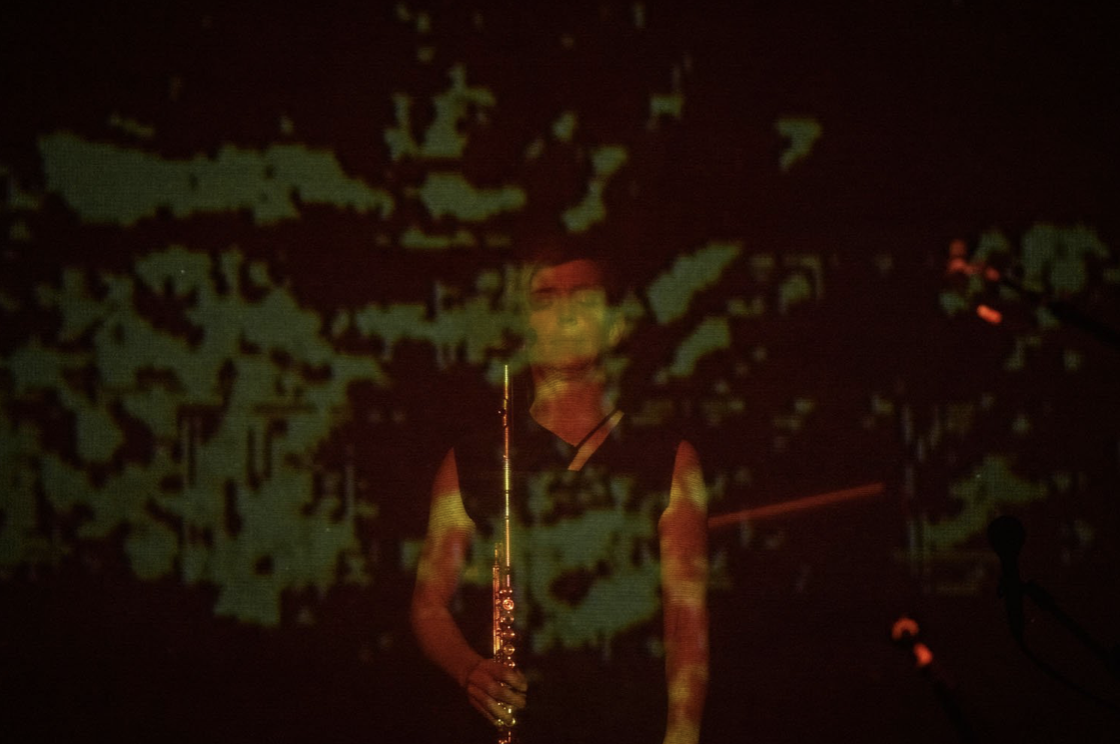
The flute, like so many woodwinds, requires a lot of practiced breathing technique. Because of the focus on air and breath this past year, did your relationship to your breath change at all?
CC: My relationship to breath is constantly changing. It’s the one thing we can’t live without, of course, and so as a flute player, as someone blessed with continuing one of our oldest mammalian musical traditions, I take the responsibility of caring for each breath very seriously. In many ways, the quality of the exhalation is about the quality—and the depth, intention, and economy—of the inhalation, so this practice of breathing in and out is the most rigorous work that I do. The best breaths, the ones that really bare your soul in sound as a player, are made with a beginner’s mind. So part of my practice is to cultivate and tend to that place of unknowing and to make sure I never breathe without curiosity and wonder—and a bit of danger.